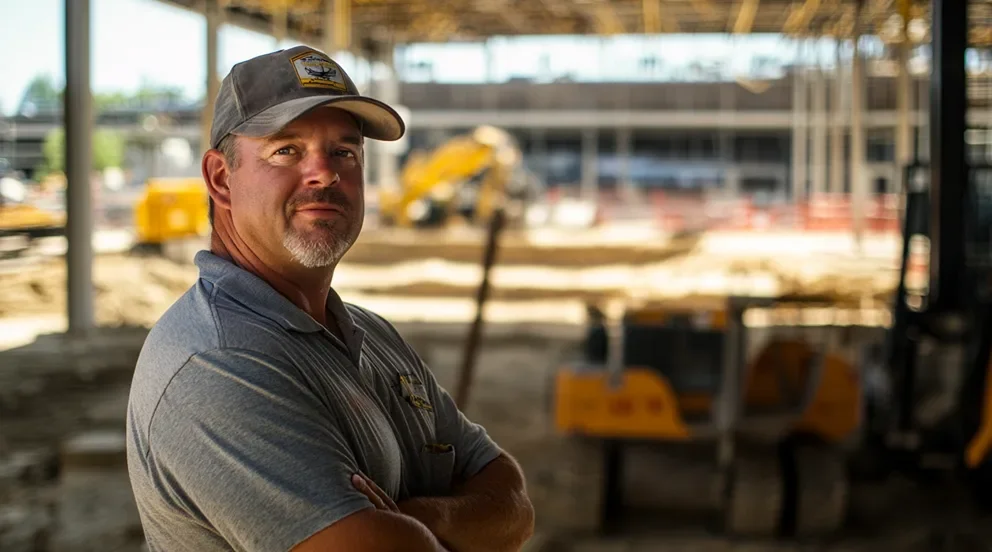Last week, we joined forces with leaders across commercial contracting to discuss the COVID-19 crisis and how they are responding. The webinar discussion was full of valuable insights and action items for contractors to take back to their teams and make the best of a bad situation.
You can catch a recording of the full webinar here, or keep reading to learn about the major takeaways from Thursday’s discussion.
Thanks to all who attended, as well as a big thank you to our webinar guests:
- Ric Fegurgur — Holmes Electric, Special Projects Exec
- Tim Speno — E2E Summit, President
- Eric Schecter — Metrotech, CRO
Here’s what they had to say…
1) Diversify customers
Contractors specializing in restaurants and/or retail have been hit especially hard by the crisis. With so many of these businesses currently unable to operate, now is the time to take a step back and look at new markets you can enter and how you can begin to service new customer types.
We all knew there’d be a downturn eventually, but one of this scale and this abrupt took businesses by surprise, quickly exposing their weaknesses. It’s normal for commercial contractors to specialize in certain types of service, but now we’re seeing a crucial need to diversify that as much as possible without sacrificing quality.
Diversification is easier said than done. There’s a lot involved with branching into new service types, from obtaining the proper licensing to fully understanding new types of businesses and their needs.
In the meantime, look through your CRM for hidden opportunities to work with companies with whom you’ve spoken in the past but never moved forward. They could be operating at capacity, in need of service techs, and don’t have the time to initiate that conversation. Look for ways to provide immediate help that can evolve into ongoing relationships and lay the groundwork for adding more “essential businesses” to your client portfolio.
2) Leverage data
Run reports to determine which customers are highest priority, who uses you for what and how frequently, who you can approach proactively…and so on. When the info is right there, it’s much easier to make quick estimates and decisions regarding resource optimization.
Jobs on hold because they’d require the customer to close shop for some time? Preventive maintenance work that would protect customers from bigger problems when they reopen? Capitalize on this information.
Eric Schecter, Metrotech CRO, says, “Data allows us to proactively look for opportunities to generate revenue and keep our team working, and so far it’s been successful. We use data to generate business that is a win-win for both the customer and us.”
Whether it’s through BuildOps or another software, meaningful data is vital to guiding your business and strategy.
3) Take advantage of the downtime
This is an unprecedented time to work on your business and lean out the waste. When restrictions are lifted and life goes back to (somewhat) normal, you’ll once again be staring down the labor shortage barrel, so take some time now to get ahead of it.
The skilled trades gap boils down to a productivity equation, how you can do more work with the same workforce. E2E Summit’s President Tim Speno encourages contractors to dig into this: “If you can add 20% productivity and utilization to your existing technicians, that will be huge once this thing is over, and the switch is flipped back on.”
This piece of advice also goes for the long-procrastinated grunt work. Tackle the projects you’ve been putting off, the ones you typically “don’t have time for.” Do the truck inventories, update your databases, set the stage for a swift comeback.
4) Plan for post-pandemic
Demand for your services is growing as we speak, and if you don’t prepare your business for the post-pandemic rush, you’ll soon be reacting to a whole new set of challenges. Stage your workforce, so everything’s ready to jump into action the minute restrictions are lifted. Strategize now on how you’ll manage the logistics and prioritize customers as soon as that time comes.
As for the future job experience itself, there are still so many unknowns. We know the way we interact with others will certainly change, but we don’t yet know exactly how. Retailers are researching new ways to track surface cleaning and chemical effectiveness, and we can almost guarantee they will immediately add new language in their service agreements to account for health/safety/sanitation requirements.
Most of these changes will inevitably be driven by the customers more so than the contractors, but we’ll all be expected to follow them regardless. Might as well be as proactive as you can by rethinking the future of job hazard analyses and establishing best practices.
5) Implement new technology
Ric Fegurgur manages about 350 employees in the service and small project electrical divisions at Holmes Electric. Ric’s teams have been using BuildOps since before the COVID-19 crisis hit, and he attributes their successful transition to having that technology in place: “BuildOps has been really key to us being able to evacuate the office fast and work remotely because they’re a cloud-based solution for us. It doesn’t matter where we’re at, we’re operating like that. It’s been seamless for us.”
And as we’ve mentioned, it’s not just the remote work aspect that’s important here, but also the access to vital data and analytics that enable your team to make big decisions quickly.
Tim Speno specializes in helping other contractors implement technology and says the #1 objection to piloting/implementing new tech is that they don’t have time. Now’s the perfect time to evaluate what’s available, put systems in place, and arm your business with the tools to help it hit the ground running when normal work resumes. Plus, there’s a good chance you’ll score a hefty discount while this is going on.
BuildOps is one such cloud based technology that can be especially helpful in helping your team stay connected and efficient across any distance. You can schedule a personalized demo here.
6) Grow from this
This has been a painful experience for everyone—to say the least. New guidelines and updates are rolling out every day, resulting in widespread anxiety and overwhelm. The best thing you can do is turn it into a learning experience and probably the hardest, most valuable one yet.
Who thought we’d ever have to scale back on the number of technicians working? When did we ever imagine a time without customers needing contractors’ services? The industry is facing challenges we’ve never even considered, so now is the time to learn and grow.
While the wounds are fresh, connect with your leaders. What has been the most painful? Where has the company been hit the hardest? In the midst of rapid decision-making, what could you have done better or differently? How can strengths in one area be transferred to additional areas and opportunities for growth?
With a whole new normal ahead, get a head start on your contingency plans and future-proofing your business.
For ongoing information and official guidelines regarding COVID-19, please continue to consult the CDC. In addition to the BuildOps blog, industry associations, such as NECA, ACCA, AGC, MCAA, as well as The ACHR NEWS are a good source for developing news and best practices for contractors during this crisis.



